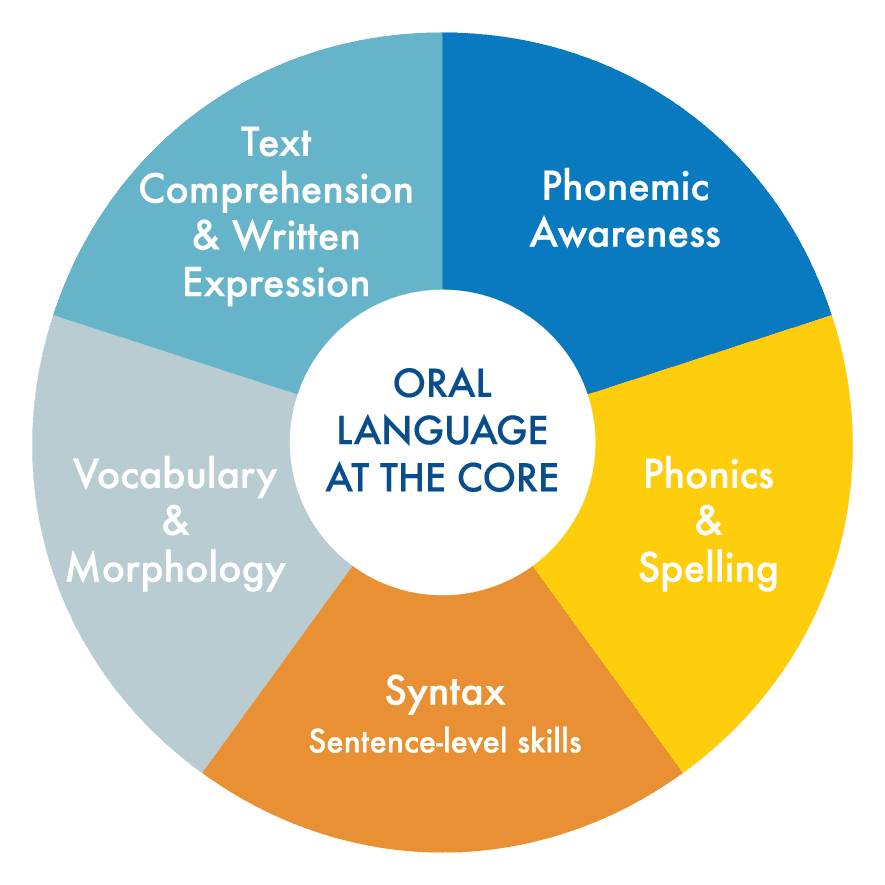
Vocabulary
What is it?
Vocabulary refers to the body of words and their meanings that students must understand to comprehend text. Vocabulary knowledge is one of the strongest predictors of reading comprehension.

Vocabulary
What is it?
Vocabulary refers to the body of words and their meanings that students must understand to comprehend text. Vocabulary knowledge is one of the strongest predictors of reading comprehension.
Frequently Asked Questions
Why is explicit instruction in vocabulary so important?
Students need to practice saying new words and using them in context to make them part of their lexicon (mental dictionary). Research shows that discussing unfamiliar words incidentally, a traditional approach to teaching vocabulary, doesn’t work.
Do students learn the meanings of words from context?
Not always. Context clues can be misdirective or non-directive. In order to learn and maintain new vocabulary, many words must be taught explicitly in various contexts. This will help students develop a depth and breadth of word knowledge.
What are some research-based activities to further develop vocabulary?
Select and teach words that can be used in multiple contexts. Build word networks by connecting the new word to other words that the students have previously learned. Teach words that have multiple meanings, including words that are part of figures of speech and figurative language. Give students examples and non-examples of words.
Teacher tip: Steep Students in Words
Create an atmosphere of rich and varied language experiences that exposes students to words and phrases across all the domains of literacy—i.e., reading, listening, speaking and writing. Delve into different genres, such as prose and poetry, narrative and informational texts.
Teacher tip: Word Selection Grid simplifies planning
Our Word Selection Grid summarizes various evidence-based approaches to teaching vocabulary. Use it to help identify which words to teach and for what purpose—e.g., a specific activity or student need (English Language Learner).
Teacher tip: Teach vocabulary Explicitly
Teach vocabulary explicitly using one or more of the basic evidence-based approaches to vocabulary instruction, which work in concert:
- Additive: Teach individual words explicitly. Present student-friendly definitions (Collins Cobuild Student Dictionary), explore varied contexts, create student-generated definitions, facilitate instructional conversations with peers, and provide interactive and responsive engagement.
- Generative: Teach word-learning strategies such as morphology, using context clues, how to use a dictionary and a thesaurus.
- Multiple-meaning Words: Teach words that can be used as nouns or verbs and parts of idioms so students know how to use polysemous words in different contexts.
- Academic language: Teach (a) academic vocabulary that students are likely to find in textbooks and on tests, but not hear in spoken language. These include “brick” words that are content-specific and tend to be found in bold-face print in text books and in glossaries (treaty); and the “mortar,” that is, terms and phrases that are common across subjects and connect language to aid in comprehension (analyze, compare). These also include connecting words, prepositions and prepositional phrases. (b) Academic discourse provides additional mortar to hold together a strong vocabulary foundation. Click here for a sample academic word list.
Tips for Principals: All-day Vocabulary
Vocabulary instruction should occur throughout the day and in all content areas—language arts, math, science, social studies, etc.
Tips for Principals: lead a word-learning culture
Lead the creation of a culture of word learning in your school, such as word of the day or week, school announcements, word posters and family involvement.
Read More to Learn More
- Adams, M. (Winter 2010-11). Advancing our students’ literacy and language. The challenge of complex texts. American Educator, 3-11, 53.
- Beck, I. L., McKeown, M. G. & Kucan, L. (Spring 2003). Taking delight in words: Using oral language to build young children’s vocabularies. American Educator 27, 36-39, 41, 45-46.
- Dutro, S. & Moran, C. (2003). Rethinking English language instruction: An architectural approach. In G.G. Garcia (Ed.) English learners: Reaching the highest level of English literacy, pp. 227-258. Newark, DE: International Reading Association.
- Gillis, M., and Eberhardt. N.C. (2015). A Word Selection Grid: Choosing Vocabulary to Teach. Perspectives on Language and Literacy 41 (3): 49.
- Hart, B. & Risley, T. (Spring 2003). The early catastrophe. The 30 million word gap. American Educator 27, 1-9.
- Feldman, K. & Kinsella, K. (2005). Narrowing the achievement gap: The case for explicit vocabulary instruction. Read About: Scholastic professional paper.
- Neuman, S. & Wright, T. (Spring 2014). The magic of words. Teaching vocabulary in the early childhood classroom. American Educator, 5-13.
Literacy How Professional Learning Series
The Literacy How Professional Learning Series translates the latest reading research into how-to instruction. The Knowledge to Practice book Series—Phonemic Awareness and Phonics, Syntax, Vocabulary, and Comprehension—is based on the current and comprehensive Literacy How reading model. It draws upon the authors’ decades of expertise and experience working with thousands of general and special education teachers. The Series emphasizes Pre-K-3rd grade conceptual and skill development. Teachers of older emerging or struggling readers will also find these tools useful.
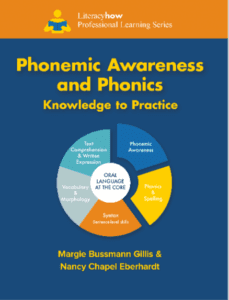
Phonemic Awareness and Phonics—the keys to breaking the code!
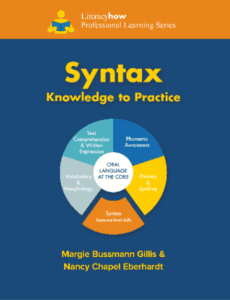
Syntax is essential—even for beginning readers!
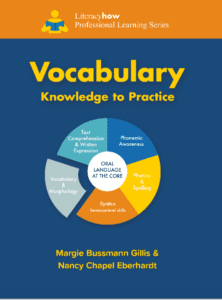
Vocabulary knowledge is essential for effective comprehension!
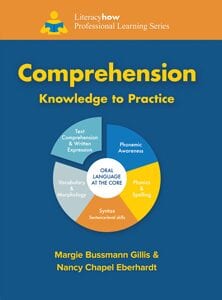
Comprehension is the goal of reading—even for beginning readers!